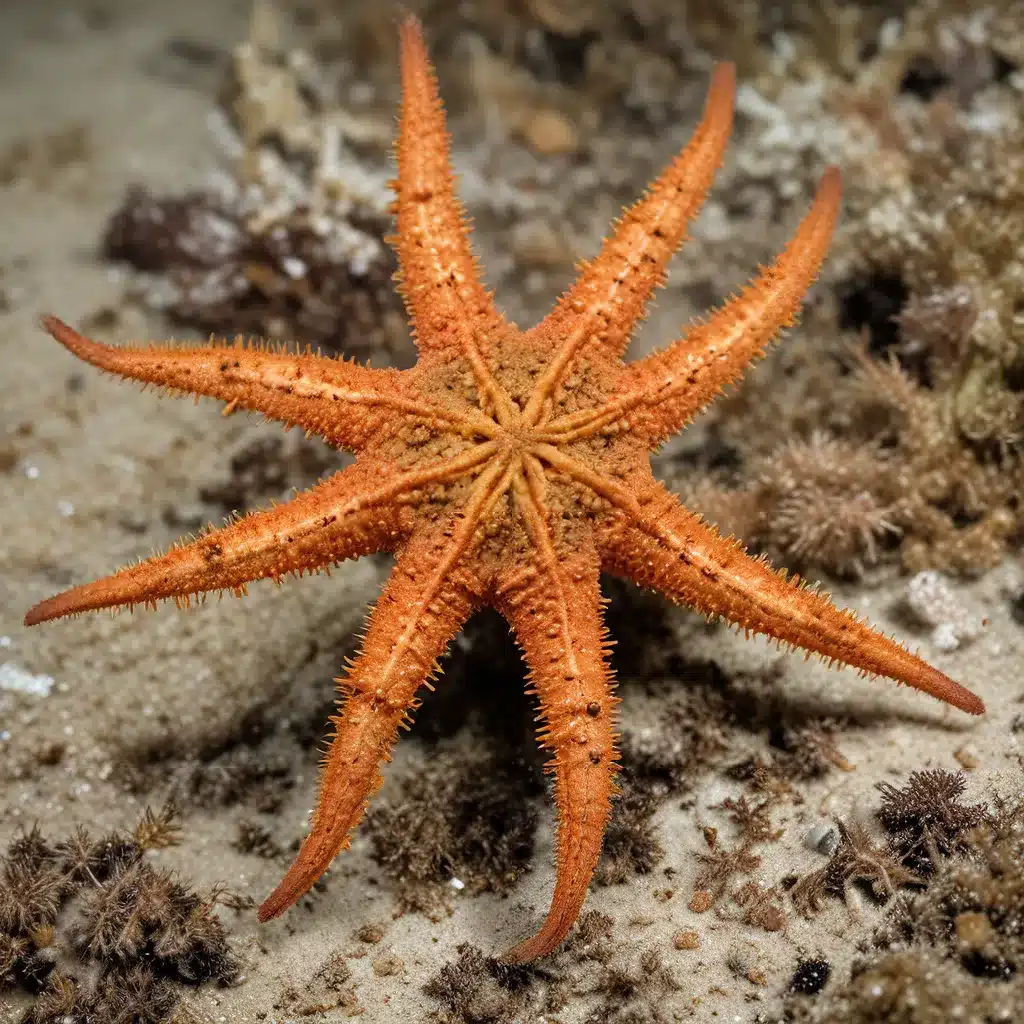
Captivating Creatures: Introducing the Brittle Star
Brittle stars, also known as serpent stars, are a fascinating group of echinoderms that can add unique visual interest and ecological balance to any aquarium. These delicate-looking invertebrates are closely related to starfish, but their distinct five-armed structure and ability to regenerate lost limbs make them a captivating addition to the underwater world.
Whether you’re an experienced aquarist or just beginning your journey into the realm of marine life, understanding the care and habitat requirements of brittle stars can open up a whole new realm of possibilities for your aquatic oasis. By creating a harmonious environment tailored to their needs, you can cultivate a thriving echinoderm community that will delight and inspire both you and your aquarium’s inhabitants.
Diverse Denizens: Exploring Brittle Star Species
Brittle stars come in a wide array of shapes, sizes, and colors, each with their own unique adaptations and behaviors. From the elegant long-armed serpent stars to the more compact and robust brittle stars, there is a species to captivate every aquarist’s interest.
One particularly stunning example is the Linckia multifora, or the many-rayed brittle star. With its vibrant blue or purple hues and intricate patterns, this species can add a touch of whimsy and enchantment to any aquariumscape. Another captivating option is the Ophiothrix fragilis, or the common brittle star, known for its delicate, spiny arms and ability to quickly dart across the substrate.
Careful consideration of the specific needs and behaviors of each brittle star species is essential when planning your aquarium setup. Some species, like the Ophiocoma erinaceus, or the hedgehog brittle star, are more reclusive and require hiding spots or dense rockwork, while others, such as the Ophionereis reticulata, or the reticulated brittle star, are more active and may benefit from open swimming areas.
Captivating Compositions: Aquascaping for Brittle Stars
When it comes to crafting the perfect aquarium for your brittle star community, careful aquascaping is key. These delicate invertebrates require a carefully curated environment that not only meets their physical needs but also showcases their natural beauty.
One effective strategy is to incorporate a variety of vertical structures, such as live rock, driftwood, or even carefully placed artificial decorations. These features provide brittle stars with ample hiding spots and surface area to explore, while also creating visually striking compositions that mimic their natural habitats.
Layering different substrate types, such as fine sand and coarse gravel, can also create a more dynamic and naturalistic environment. Brittle stars thrive in areas with a mix of soft and hard surfaces, as this allows them to burrow, hide, and move about freely.
Attention to lighting is another crucial aspect of aquascaping for brittle stars. These invertebrates often prefer moderate to low-light conditions, as harsh lighting can stress them and even cause them to retreat or lose their arms. Incorporating a mix of spotlights, moonlights, and diffused lighting can create an atmosphere that showcases the intricate textures and colors of your brittle star community.
Harmonious Habitats: Maintaining Water Quality for Brittle Stars
Ensuring optimal water quality is essential for the long-term health and wellbeing of your brittle star community. These delicate invertebrates are particularly sensitive to fluctuations in water parameters, making consistent water management a top priority.
Maintaining stable pH levels (8.1-8.4) and moderate water hardness (8-12 dKH) is crucial for brittle star health. Fluctuations in these parameters can cause stress, disease, and even mortality. Regular water testing and partial water changes (10-15% per week) are essential to keep your aquarium’s water in optimal condition.
Equally important is the filtration system you choose for your brittle star aquarium. These invertebrates thrive in well-oxygenated environments, so a combination of mechanical, chemical, and biological filtration is recommended. Powerheads or other water circulation devices can also help ensure adequate water movement and gas exchange.
Vigilant monitoring and timely adjustments to your water management and filtration system are key to maintaining a thriving brittle star community. By staying attuned to your aquarium’s needs and making proactive changes, you can create a harmonious habitat that allows these captivating creatures to truly flourish.
Harmonious Cohabitation: Choosing Compatible Tank Mates
When it comes to populating your brittle star aquarium, careful selection of tank mates is essential. These delicate invertebrates require a peaceful and stable environment, free from aggressive or boisterous tankmates that could cause harm or undue stress.
Ideal tank mates for brittle stars include other slow-moving, peaceful invertebrates such as corals, anemones, and some species of shrimp. Smaller, non-predatory fish like clownfish, gobies, and some species of wrasse can also make suitable companions, provided they are not overly active or prone to nipping.
It’s crucial to avoid introducing large, predatory fish or aggressive species that may view brittle stars as a potential food source. Species like lionfish, triggerfish, and some large angelfish should be kept well away from your delicate echinoderm community.
Careful monitoring and a willingness to make adjustments to your tank’s population is essential when fostering a harmonious coexistence between brittle stars and their tankmates. By creating a balanced and thoughtfully curated ecosystem, you can ensure the long-term health and well-being of your entire aquarium community.
Conclusion: Embracing the Brilliance of Brittle Stars
Incorporating brittle stars into your aquarium can be a truly rewarding and captivating experience. These delicate invertebrates not only add visual interest and ecological balance to your underwater oasis but also present a unique opportunity to hone your aquarium care skills.
By understanding the specific needs and behaviors of different brittle star species, crafting visually stunning aquascapes, maintaining optimal water quality, and selecting compatible tankmates, you can create a thriving echinoderm community that will delight both you and your aquarium’s inhabitants.
So why not dive into the brilliant world of brittle stars and uncover the hidden wonders that these captivating creatures have to offer? With the right care and attention, your aquarium can become a true showcase of the diverse and enchanting Echinoderm Kingdom.

